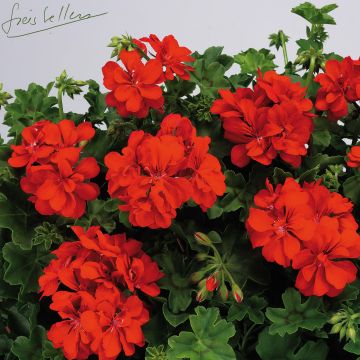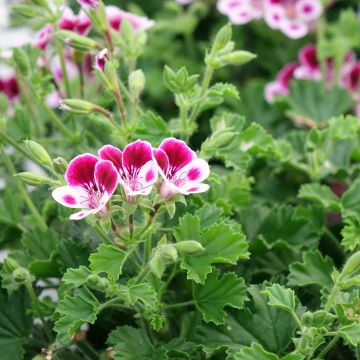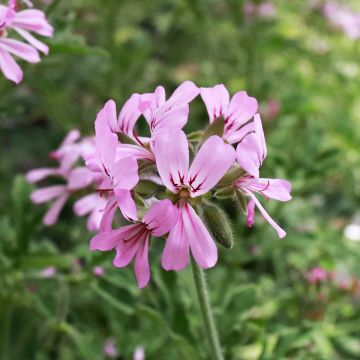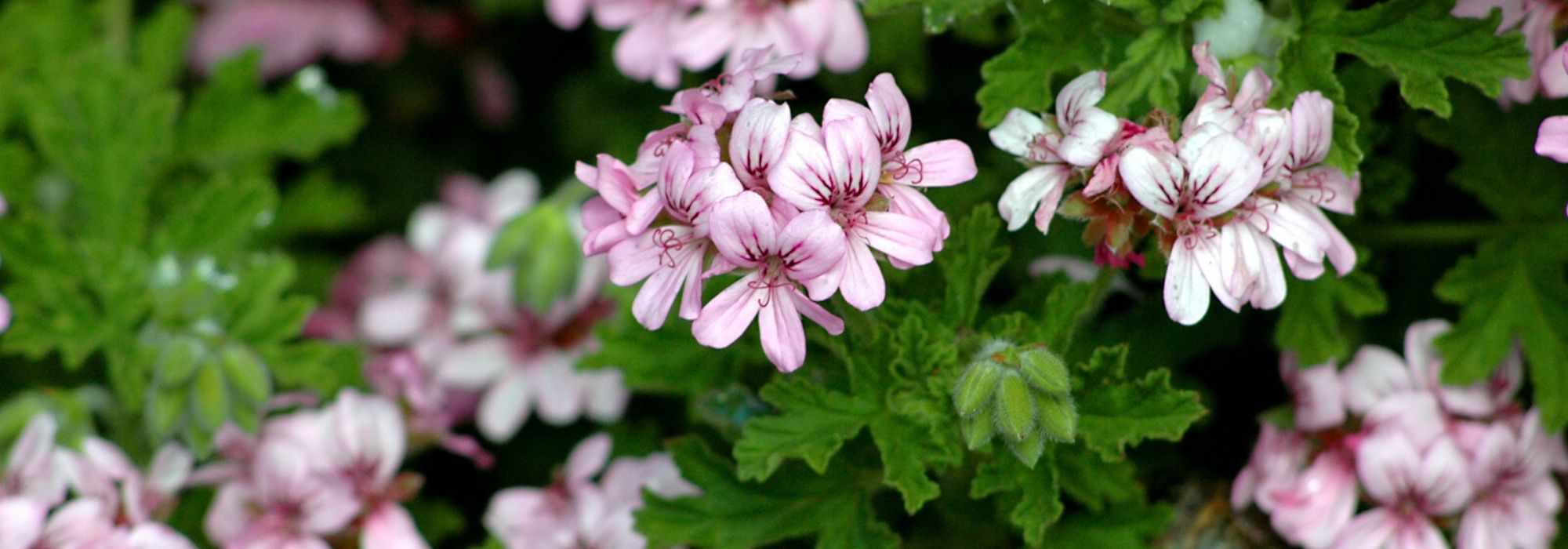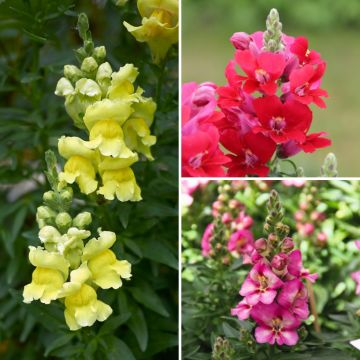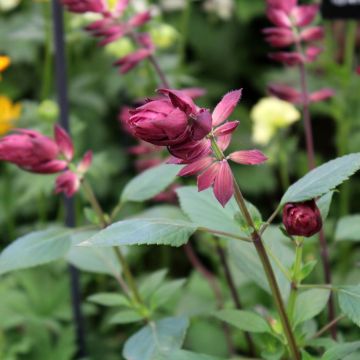

Pélargonium odorant crispum Variegatum - Géranium d'odeur panaché au parfum de citron.


Pélargonium odorant crispum Variegatum - Géranium d'odeur panaché au parfum de citron.
Pelargonium crispum Variegatum
Pelargonium crispum Variegatum
Lemon-Scented Geranium
Special offer!
Receive a €20 voucher for any order over €90 (excluding delivery costs, credit notes, and plastic-free options)!
1- Add your favorite plants to your cart.
2- Once you have reached €90, confirm your order (you can even choose the delivery date!).
3- As soon as your order is shipped, you will receive an email containing your voucher code, valid for 3 months (90 days).
Your voucher is unique and can only be used once, for any order with a minimum value of €20, excluding delivery costs.
Can be combined with other current offers, non-divisible and non-refundable.
Why not try an alternative variety in stock?
View all →This plant carries a 6 months recovery warranty
More information
We guarantee the quality of our plants for a full growing cycle, and will replace at our expense any plant that fails to recover under normal climatic and planting conditions.
Would this plant suit my garden?
Set up your Plantfit profile →
Description
The scented Pelargonium crispum Variegatum, also known as Pelargonium 'Prince Rupert Variegated' gradually forms a small, evergreen shrub with an upright habit, appreciated for its superb crisp foliage with pleated edges, marginated with white and cream. The leaves release an intense fragrance that pleasantly resembles lemon when touched. It flowers from June to September, producing delicate, pale pink flowers with a purple centre, which are fairly large but not very abundant. Grow it in full sun, in well-drained soil as it is sensitive to excessive water. Planting it in the ground is only possible in our mildest regions that are not affected by frost.
Pelargonium crispum 'Variegatum' is derived from a botanical species endemic to the southwest of the Cape Province in South Africa, Pelargonium crispum. 'Variegatum' closely resembles it and forms a woody, perennial shrub with an upright habit, belonging to the geranium family. Its habit is supported by stiff, sturdy, sparsely branched stems, allowing the plant to reach a height of up to 1m (3ft) with a spread of 40cm (16in). The entire plant emits a very pleasant scent reminiscent of lemon. Its particularly ornamental foliage is composed of small, rounded leaves, divided into 3 lobes, undulate, strongly pleated at the edges, and measuring 3 to 5cm (1 to 2in) wide. They have a very soft grey-green colour, marginated with white and pale yellow. The flowering takes place from June to September, with sparse flowers consisting of 5 pale pink petals marked with lines and red-purple stamens in the throat. They can reach up to 5cm (2in) in diameter.
With a simple touch, Pelargonium crispum 'Variegatum' releases a powerful fragrance and repels mosquitoes. Therefore, plant it in a pot or in the ground in a place where you can touch it and admire it, along a pathway or in a large pot on the terrace or veranda. Scented geraniums are precious for perfuming a room, where they delight us with their sometimes unexpected and wonderful scents. We were captivated one day after the rain by a bed of scented geraniums and spent a long time immersing ourselves in a symphony of delicate fragrances. It's one of our favourites, as you may have guessed. In mild climates, it is a plant that withstands summer drought perfectly and requires very little maintenance, making it valuable for dry gardens, especially those near the sea.
Its leaves are used in perfumery to extract an aromatic essential oil, and the English pick its flowers to flavor their jellies. Try using scented pelargonium flowers to flavour a recipe, it works! The edible leaves are used in fruit salads and potpourri.
Pelargonium crispum Variegatum in pictures




Flowering
Foliage
Plant habit
Botanical data
Pelargonium
crispum
Variegatum
Geraniaceae
Lemon-Scented Geranium
Cultivar or hybrid
Other Pelargonium - Geranium
View all →Planting and care
Plant your seedlings in the open ground after the last frosts, in a sunny position. You can also plant them in pots in a sheltered location, which you can then take outdoors in May. If you plant them in the open ground, wait until the frosts have passed. Fragrant geraniums require well-drained soil, but not necessarily very rich soil. Water moderately. In pots, regular watering is necessary in summer. You can protect your geraniums by bringing them indoors, under a veranda or in a cold greenhouse or bright, unheated room in winter.
They can tolerate a light frost, but they will not survive the winter in the garden.
Planting period
Intended location
Care
Planting & care advice
This item has not been reviewed yet - be the first to leave a review about it.
Similar products
Haven't found what you were looking for?
Hardiness is the lowest winter temperature a plant can endure without suffering serious damage or even dying. However, hardiness is affected by location (a sheltered area, such as a patio), protection (winter cover) and soil type (hardiness is improved by well-drained soil).

Photo Sharing Terms & Conditions
In order to encourage gardeners to interact and share their experiences, Promesse de fleurs offers various media enabling content to be uploaded onto its Site - in particular via the ‘Photo sharing’ module.
The User agrees to refrain from:
- Posting any content that is illegal, prejudicial, insulting, racist, inciteful to hatred, revisionist, contrary to public decency, that infringes on privacy or on the privacy rights of third parties, in particular the publicity rights of persons and goods, intellectual property rights, or the right to privacy.
- Submitting content on behalf of a third party;
- Impersonate the identity of a third party and/or publish any personal information about a third party;
In general, the User undertakes to refrain from any unethical behaviour.
All Content (in particular text, comments, files, images, photos, videos, creative works, etc.), which may be subject to property or intellectual property rights, image or other private rights, shall remain the property of the User, subject to the limited rights granted by the terms of the licence granted by Promesse de fleurs as stated below. Users are at liberty to publish or not to publish such Content on the Site, notably via the ‘Photo Sharing’ facility, and accept that this Content shall be made public and freely accessible, notably on the Internet.
Users further acknowledge, undertake to have ,and guarantee that they hold all necessary rights and permissions to publish such material on the Site, in particular with regard to the legislation in force pertaining to any privacy, property, intellectual property, image, or contractual rights, or rights of any other nature. By publishing such Content on the Site, Users acknowledge accepting full liability as publishers of the Content within the meaning of the law, and grant Promesse de fleurs, free of charge, an inclusive, worldwide licence for the said Content for the entire duration of its publication, including all reproduction, representation, up/downloading, displaying, performing, transmission, and storage rights.
Users also grant permission for their name to be linked to the Content and accept that this link may not always be made available.
By engaging in posting material, Users consent to their Content becoming automatically accessible on the Internet, in particular on other sites and/or blogs and/or web pages of the Promesse de fleurs site, including in particular social pages and the Promesse de fleurs catalogue.
Users may secure the removal of entrusted content free of charge by issuing a simple request via our contact form.
The flowering period indicated on our website applies to countries and regions located in USDA zone 8 (France, the United Kingdom, Ireland, the Netherlands, etc.)
It will vary according to where you live:
- In zones 9 to 10 (Italy, Spain, Greece, etc.), flowering will occur about 2 to 4 weeks earlier.
- In zones 6 to 7 (Germany, Poland, Slovenia, and lower mountainous regions), flowering will be delayed by 2 to 3 weeks.
- In zone 5 (Central Europe, Scandinavia), blooming will be delayed by 3 to 5 weeks.
In temperate climates, pruning of spring-flowering shrubs (forsythia, spireas, etc.) should be done just after flowering.
Pruning of summer-flowering shrubs (Indian Lilac, Perovskia, etc.) can be done in winter or spring.
In cold regions as well as with frost-sensitive plants, avoid pruning too early when severe frosts may still occur.
The planting period indicated on our website applies to countries and regions located in USDA zone 8 (France, United Kingdom, Ireland, Netherlands).
It will vary according to where you live:
- In Mediterranean zones (Marseille, Madrid, Milan, etc.), autumn and winter are the best planting periods.
- In continental zones (Strasbourg, Munich, Vienna, etc.), delay planting by 2 to 3 weeks in spring and bring it forward by 2 to 4 weeks in autumn.
- In mountainous regions (the Alps, Pyrenees, Carpathians, etc.), it is best to plant in late spring (May-June) or late summer (August-September).
The harvesting period indicated on our website applies to countries and regions in USDA zone 8 (France, England, Ireland, the Netherlands).
In colder areas (Scandinavia, Poland, Austria...) fruit and vegetable harvests are likely to be delayed by 3-4 weeks.
In warmer areas (Italy, Spain, Greece, etc.), harvesting will probably take place earlier, depending on weather conditions.
The sowing periods indicated on our website apply to countries and regions within USDA Zone 8 (France, UK, Ireland, Netherlands).
In colder areas (Scandinavia, Poland, Austria...), delay any outdoor sowing by 3-4 weeks, or sow under glass.
In warmer climes (Italy, Spain, Greece, etc.), bring outdoor sowing forward by a few weeks.
































